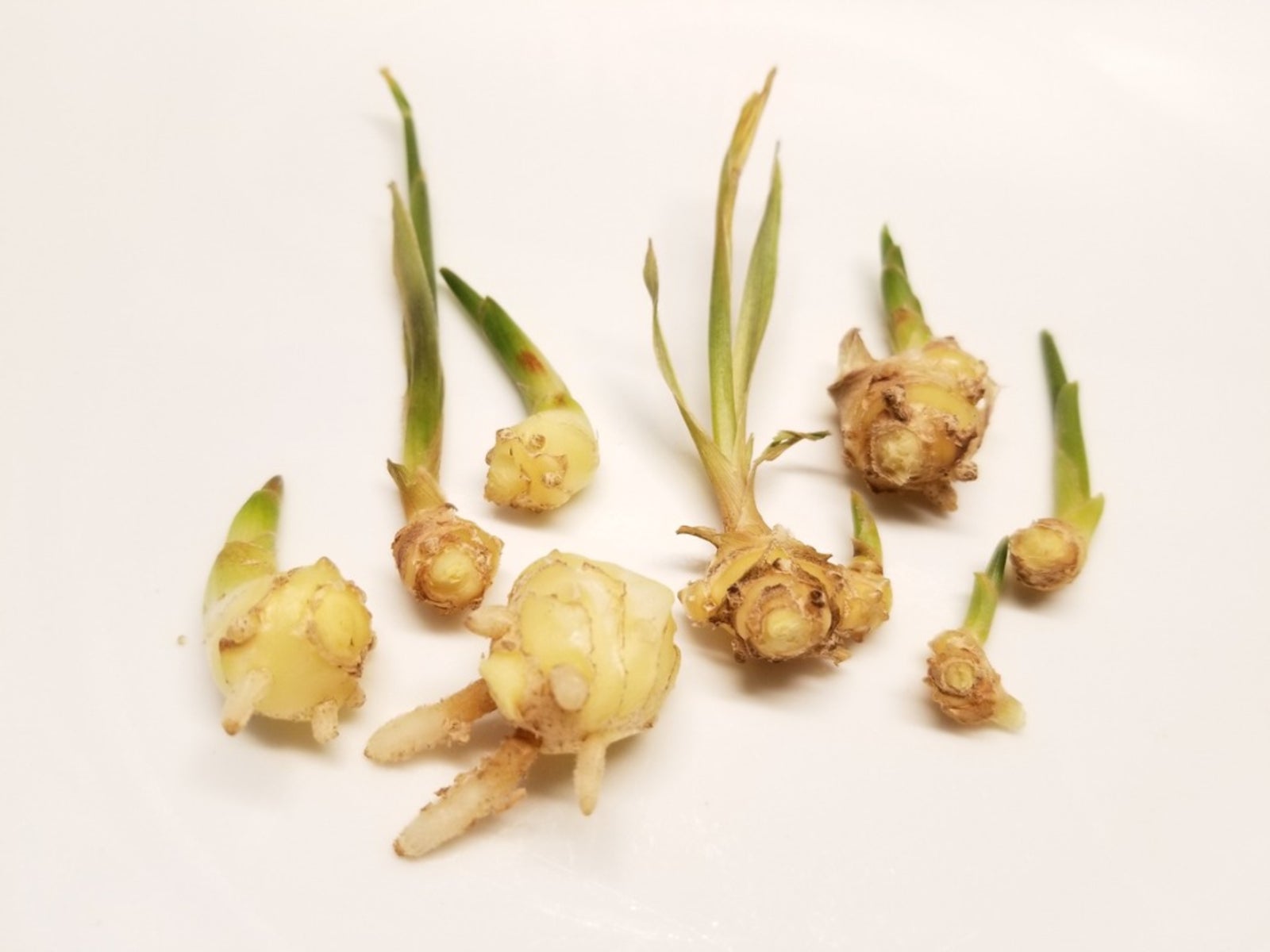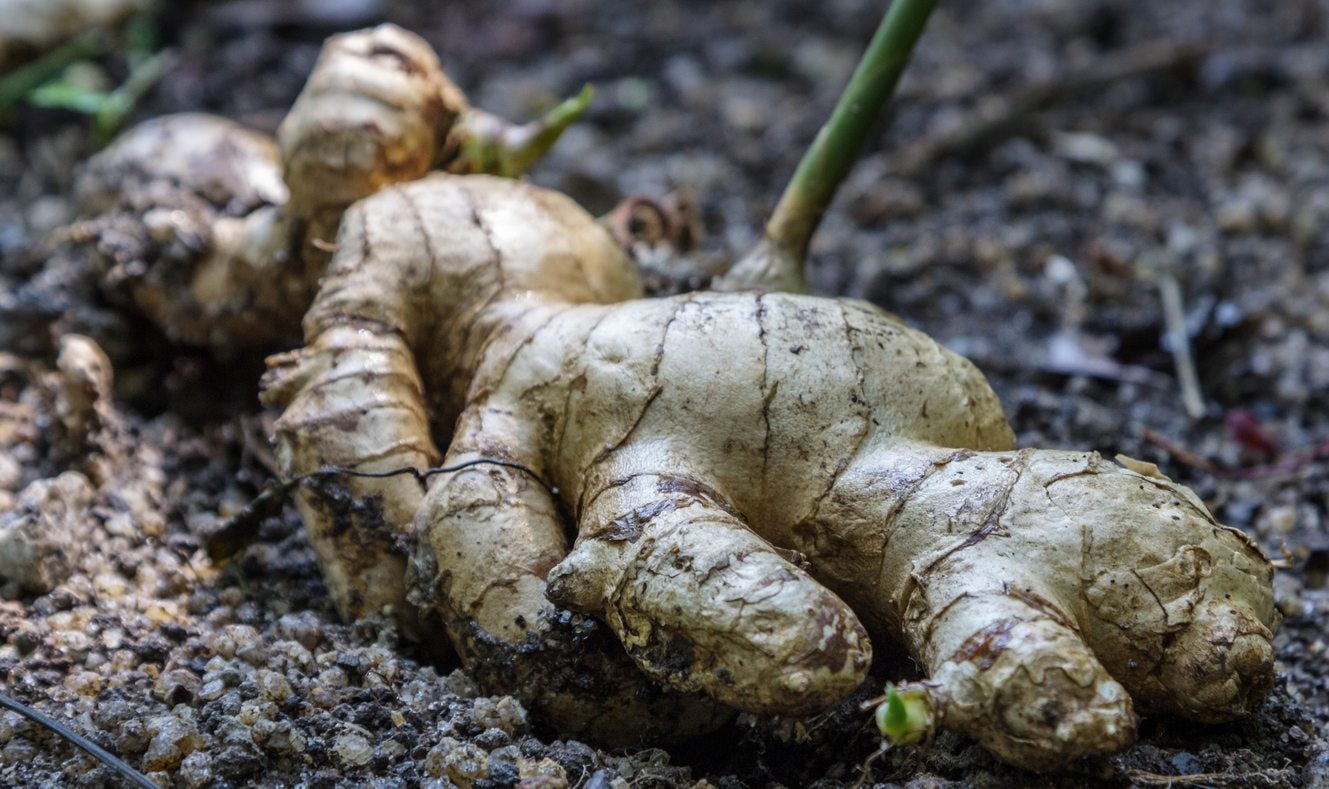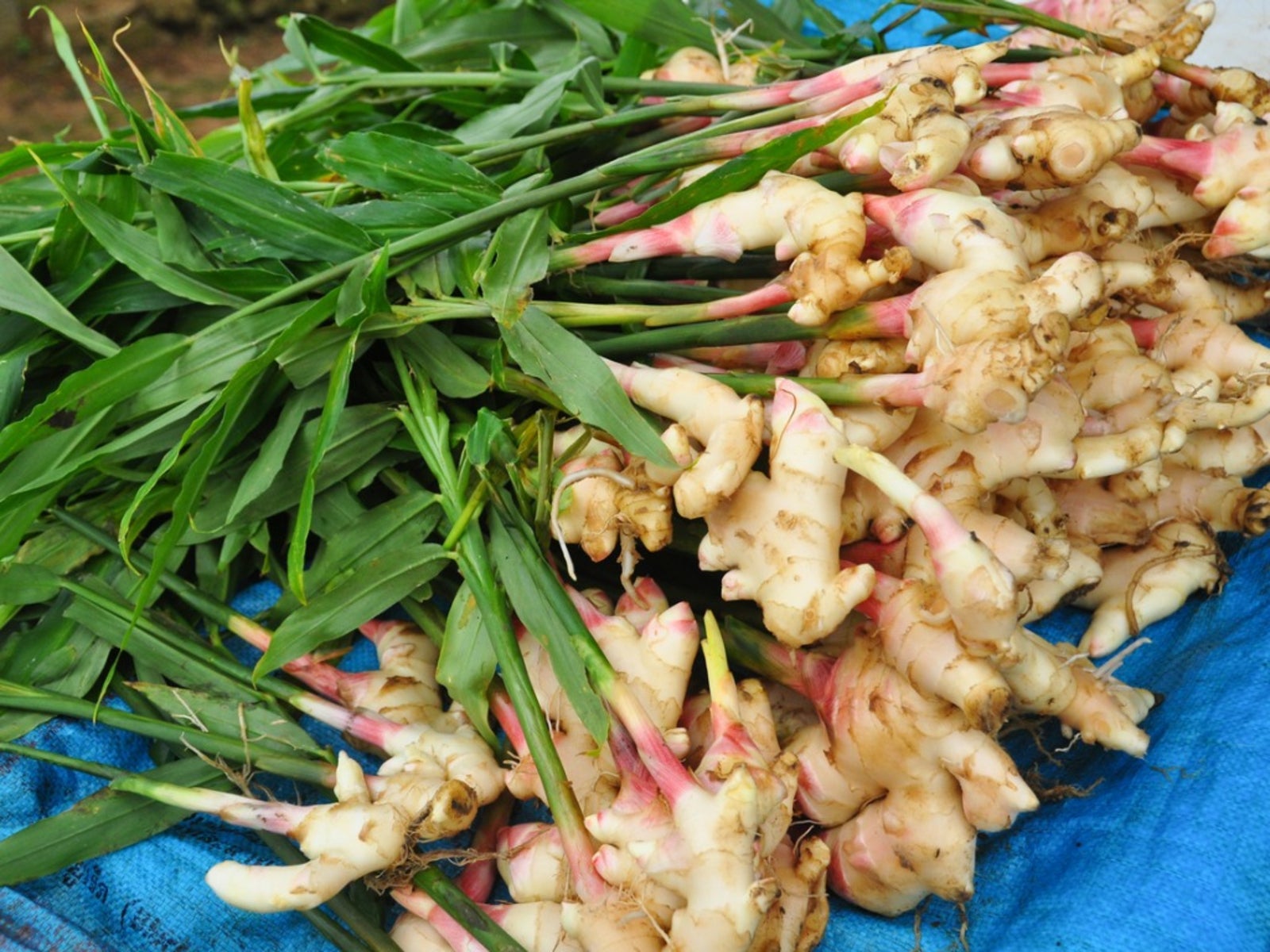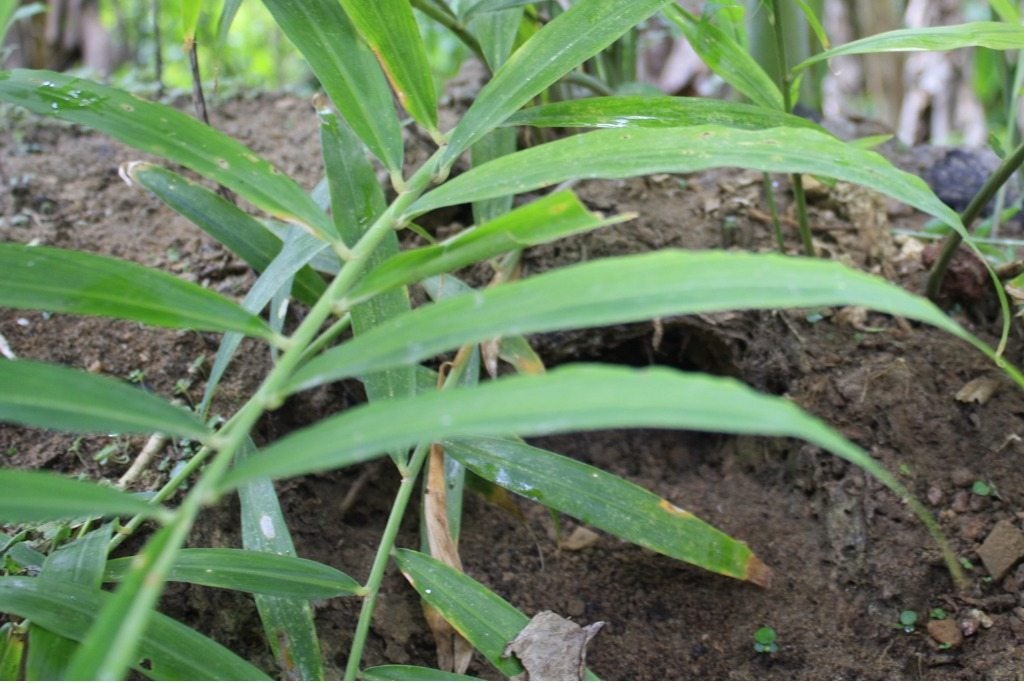Ginger Plant Division : How To Divide Ginger Plants


Ginger is a perennial herb that grows from rhizomes. Separating a ginger periodically will encourage new growth and can garner new plants from divided rhizomes. Ginger plant division should be done when a container is crowded or when garden plants are at least three years old. You can use the rhizomes for flavoring and tea, or plant them anew to develop additional plants for your landscape or give away to a deserving family member or friend. The trick is knowing when to divide ginger and how to do it without damaging the parent plant.
When to Divide Ginger
The culinary ginger we know and love comes from Zinginber officinale but there are ornamental gingers in the genera Hedychium and Curcuma which produce beautiful flowers and attractive foliage as well. Most are natives of tropical to sub-tropical regions and require well-draining soil, sun, and warm temperatures. Rhizomes are the part of the plant which is divided in order to make new plants or simply to separate old rhizomes from new and increase growth. The prevailing wisdom on separating ginger points to dividing when the weather is warm but recent rains have occurred. Most gingers produce rhizomes near the top 3 to 4 inches (8-10 cm.). Rhizomes are underground modified stems which have growth nodes. It is from these growth nodes that new plant material will sprout. Therefore, it is the rhizomes you are harvesting during ginger plant division. If you are seeing numerous rhizomes pushing to the surface of the soil, it is time to divide the plant. Splitting a ginger plant once this occurs will keep the plant healthy and allow you to harvest those rhizomes, either for culinary use as in the case of Zinginber or just to create more plants.
How to Divide Ginger Plants
Ginger has glorious leaves and flowers. It adds a tropical aspect to the home interior if there is proper lighting or as an outdoor plant. The majority of a ginger plant's growth occurs when temperatures are warm and plenty of moisture is available. To separate the plant, dig it up carefully without damaging the rhizomes and roots. Use a sharp knife or root saw and cut away individual rhizomes. Check each rhizome for damage from rot or insect/rodent damage. Discard any damaged rhizomes. Take the healthy rhizomes and select all that have at least several eyes or growth nodes. These will be the source of sprouts and new plant growth. Ensuring that each piece planted has plenty of nodes is insurance in case one doesn't sprout. You can also store the rhizomes in peat moss in a paper bag until planting conditions are favorable.
What to Do After Ginger Plant Division
After splitting a ginger plant, you should have several healthy viable roots or rhizomes. You can use some of these as kitchen flavoring or immediately plant them. In many regions, it is best to start the plant off in a container so it can be brought indoors in case of cold snaps. Use a well-draining soil with plenty of compost incorporated into it. Lightly moisten the soil and install each rhizome at least 3 inches (8 cm.) under the surface of the soil with the majority of the growth nodes pointing to the sky. Keep the soil lightly moist but never soggy. If temperatures are at least 70 to 80 degrees F. (21-27 C.), the rhizomes should sprout in a few weeks. You can move them into the ground once there are a pair of true leaves, or grow them on in the container.
Gardening tips, videos, info and more delivered right to your inbox!
Sign up for the Gardening Know How newsletter today and receive a free copy of our e-book "How to Grow Delicious Tomatoes".

Bonnie Grant is a professional landscaper with a Certification in Urban Gardening. She has been gardening and writing for 15 years. A former professional chef, she has a passion for edible landscaping.
-
 Looking For Plants To Give You The Soft And Fuzzies? Try These 5 Fuzzy Leaf Plant Options
Looking For Plants To Give You The Soft And Fuzzies? Try These 5 Fuzzy Leaf Plant OptionsLovers of texture, drama, silver foliage and tactile plants will adore these special sensory garden additions. These fuzzy leaf plant options will leave you all aglow
By Susan Albert
-
 Get Ready For A Summer Of Hummers! Grow These Full Sun Hummingbird Plants and Flowers
Get Ready For A Summer Of Hummers! Grow These Full Sun Hummingbird Plants and FlowersIf you’re lucky enough to enjoy a sunny backyard, make sure you are maxing out on your pollinator opportunities and grow these full sun hummingbird plants and flowers
By Tonya Barnett
-
 Homemade Ginger Ale Straight From The Garden
Homemade Ginger Ale Straight From The GardenLearn here how to grow your own ginger and check out a recipe for homemade ginger ale.
By Bonnie L. Grant
-
 Can I Plant Grocery Store Ginger - How To Grow Grocery Store Ginger
Can I Plant Grocery Store Ginger - How To Grow Grocery Store GingerGinger has a lengthy history and was once bought and sold as a luxury item. But perhaps you have wondered, “Can I plant grocery store ginger?”. Read on to find out.
By Amy Grant
-
 Ginger Harvesting Guide – Learn How To Harvest Ginger Plants
Ginger Harvesting Guide – Learn How To Harvest Ginger PlantsPeople have been harvesting ginger root for its aromatic, spicy rhizomes for centuries. Given that these delectable roots are underground, how do you know if its ginger harvesting time? Click here to find out when to pick and how to harvest ginger.
By Amy Grant
-
 Diseases Of Ginger – Recognizing Ginger Disease Symptoms
Diseases Of Ginger – Recognizing Ginger Disease SymptomsGinger can be an interesting addition to your edible landscaping. Careful planning and a watchful eye will ensure that you never have to experience any of the ginger plant diseases found in this article. Click here for more information on treating sick ginger plants.
By Kristi Waterworth
-
 Ginger With Brown Leaves: Learn Why Ginger Leaves Are Turning Brown
Ginger With Brown Leaves: Learn Why Ginger Leaves Are Turning BrownGinger plants are interesting additions to gardens, but they can be fickle about growing conditions. Brown leaves can be an alarming symptom, but the chances are good that your plant is showing a sign of stress, rather than a sign of sickness. Learn more here.
By Kristi Waterworth
-
 Japanese Ginger Info: How To Grow Myoga Ginger Plants
Japanese Ginger Info: How To Grow Myoga Ginger PlantsJapanese ginger roots are not edible. The shoots and buds of this plant are edible and can be used like an herb in cooking. Japanese ginger uses aren't limited to food, though. Learn more in this article.
By Mary Ellen Ellis
-
 Can Ginger Grow Outside – Ginger Cold Hardiness And Site Requirements
Can Ginger Grow Outside – Ginger Cold Hardiness And Site RequirementsOnce an exotic herb is grown only in tropical locations, today homeowners all over the world can grow their own ginger in the garden. Click the following article to learn more about growing ginger outdoors along with their outdoor requirements.
By Darcy Larum
-
 Hydroponic Ginger Plants – Can You Grow Ginger In Water
Hydroponic Ginger Plants – Can You Grow Ginger In WaterTo grow ginger, these conditions need to mimic those where it grows naturally, but what about hydroponic ginger plants? Can you grow ginger in water? Click on this article to find out about rooting and growing ginger in water.
By Amy Grant